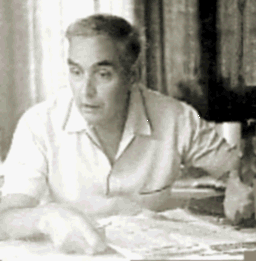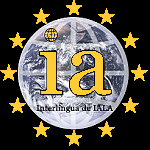In neuropsychology, linguistics, and the philosophy of language, a natural language or ordinary language is any language that has evolved naturally in humans through use and repetition without conscious planning or premeditation. Natural languages can take different forms, such as speech or signing. They are distinguished from constructed and formal languages such as those used to program computers or to study logic.
An international auxiliary language or interlanguage is a language meant for communication between people from different nations who do not share a common first language. An auxiliary language is primarily a foreign language.

Richard "Ric" Berger (1894–1984) was a Swiss professor of design, decoration, and art history. He is best known for his numerous newspaper articles about historical monuments, mainly in the French-speaking part of Switzerland, including his own drawings of the buildings. Through these articles, he contributed to an increased interest in historical monuments and settings among many hitherto uninformed people, and probably also contributed indirectly to a wider interest in preserving and saving historical monuments from destruction.
Ezra Clark Stillman (1907-1995) laid out the criteria for extracting and standardizing the vocabulary of Interlingua. In 1937, Stillman replaced William Edward Collinson as Director of Research at the International Auxiliary Language Association (IALA), which presented Interlingua to the public in 1951.
William Edward Collinson was an eminent British linguist and, from 1914 to 1954, Chair of German at the University of Liverpool. Like Edward Sapir and Otto Jespersen, he collaborated with Alice Vanderbilt Morris to develop the research program of the International Auxiliary Language Association (IALA). From 1936 to 1939, he was Research Director of IALA. Under Collinson's guidance, methods of compiling international word material were tested at Liverpool. In 1939 IALA moved from Liverpool to New York and E. Clark Stillman succeeded Collinson as Research Director. Alexander Gode, editor of the first English-Interlingua dictionary published in 1951, remained in contact with Collinson which had collected much of linguistic material in the University of Liverpool.
Words can be included in Interlingua in either of two ways: by establishing their internationality or by deriving them using Interlingua words and affixes. The second of these methods is often called free word-building.
The Interlingua–English Dictionary (IED), developed by the International Auxiliary Language Association (IALA) under the direction of Alexander Gode and published by Storm Publishers in 1951, is the first Interlingua dictionary. The IED includes about 27,000 words drawn from about 10,000 roots. It also presents 125 affixes that facilitate free word formation. Its full title is Interlingua: A Dictionary of the International Language.
Hugh Edward Blair was a linguist and artist. He was the assistant of Alice Vanderbilt Morris, who founded the International Auxiliary Language Association, and the closest collaborator of Alexander Gode. Blair co-authored the Interlingua Grammar, which was published by IALA in 1951.
Július Tomin (1915–2003) was a high school teacher and well-known author from Czechoslovakia. He was persecuted during the Soviet occupation for promoting Interlingua as a second language.
The Swedish Society for Interlingua, founded January 1, 1964, is an agency that operates in Sweden to publicize Interlingua and encourage its active use. The SSI arranges activities, produces Interlingua publications, and collaborates with the other Nordic Interlingua organizations to publish Actualitates - Interlingua i Norden, a magazine in Interlingua and the Scandinavian languages.
Jurij Cherednikov is a Ukrainian-American author and software engineer. He was the first representative of the Union Mundial pro Interlingua in Ukraine and co-founder of the Ukrainian Interlingua Society.
The Ukrainian Interlingua Society, works in Ukraine to promote the knowledge and active use of Interlingua. It supports the work of the Russian representative of the Union Mundial pro Interlingua.
Words can be included in Interlingua in either of two ways: through regular derivation using roots and affixes or by establishing their eligibility as international words. The second of these methods is explained below.
Willem Jacob Visser worked to unite the organizations of different auxiliary languages. In the 1970s, he edited a magazine Union in Eurolatin, his own variation of Interlingua. In the pages of Union, he published articles and excerpts from users of all auxiliary languages and their periodicals. Visser argued that "interlinguists throughout the world should become friends", and his magazine is credited with improving understanding. He was Ido Representative in the Netherlands and later a member of Interlingua-Nederland.
Engelbert Pigal was an Austrian engineer. A speaker of Interlingua and two other auxiliary languages, he wrote two cosmological monographs in Interlingua.
Wilhelm Bladin was a noted progressive teacher and author born in Gävle, Sweden. He compiled grammars, manuals, and dictionaries in English, German, French, and Interlingua. He was the second Secretary General of the Union Mundial pro Interlingua for Sweden.
The history of Interlingua comprises the formation of the language itself as well as its community of speakers.
André Schild : born in Fontainemelon or Cernier in the Swiss canton of Neuchâtel. He was a linguist and former administrator of the Universal Esperanto Association in Geneva. He taught at the Benedict School (Bénédict-Schule) in Basel. He published the outline of his Neolatino system in 1947.

